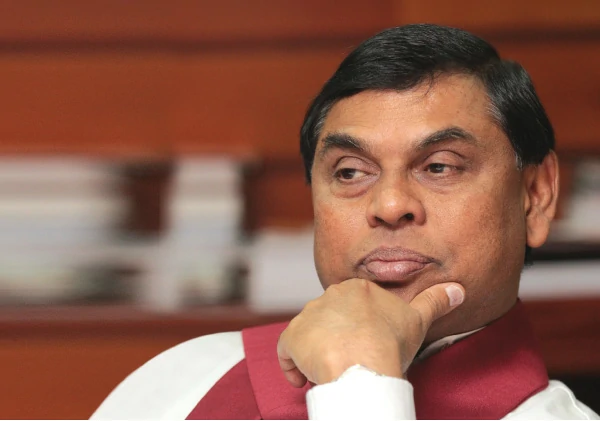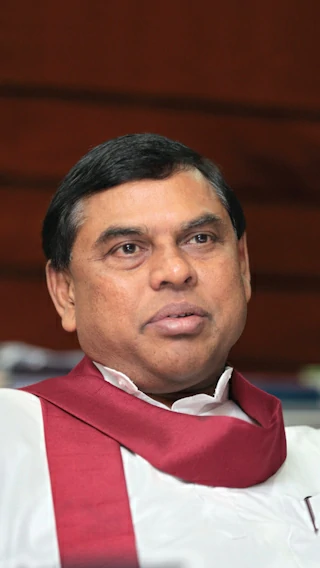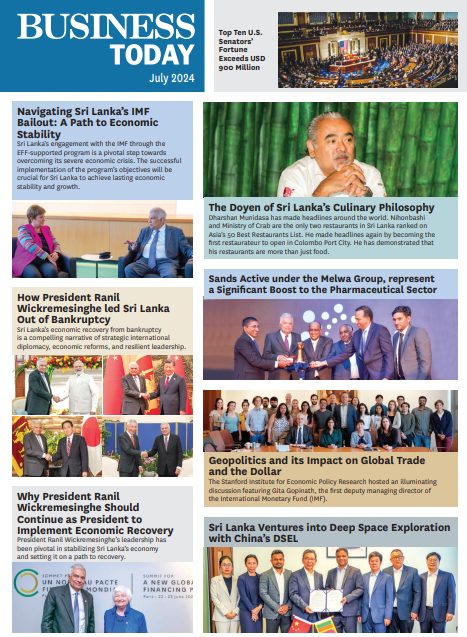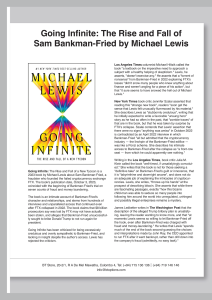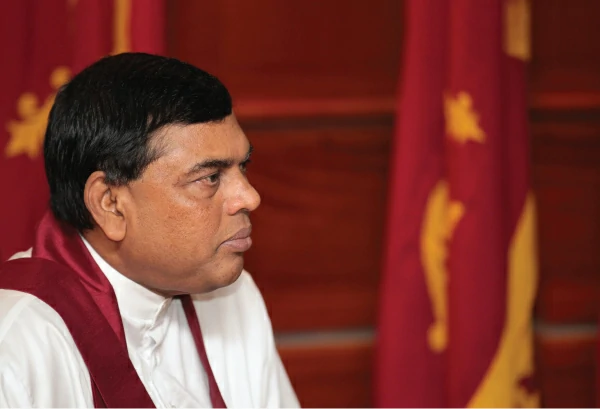
Minister Basil Rajapaksa took over the mammoth task of Economic Development two years ago. Known as a worker who never takes no for an answer, much expectation and hope were laid on him. He does not seek the limelight nor does he go around talking about his achievements though there are many to speak of. His passion and determination to uplift the communities of this country is evident in each word he speaks. He appeals to the people to be happy and think positively. His views and thinking are very different… an approach that brings results and speaks volumes…
By Udeshi Amarasinghe
Photography Menaka Aravinda and Mahesh Bandara
It has been two years since you were appointed as the Minister of Economic Development, can you tell us about the progress in relation to development so far?
The Ministry of Economic Development focuses on three main areas. One is rural economic development; our country has been established through the village. We have 36,000 villages, 14,000 Grama Sevaka Divisions and 80 percent of our population either live in the estates or rural villages. The second sector is tourism. The third aspect is attracting investment; mainly foreign investments. These are the three main components of the Ministry. Under rural development, in order to address poverty we have the Samurdhi Authority, Southern and Udarata Development Board and the Samurdhi Development Department. Under tourism we have specialised institutes such as the Zoological Gardens and Botanical Gardens. The organisation that is responsible for investment is the Board of Investment (BOI). However, the Ministry of Economic Development also overlooks the general economy and coordinates with other ministries such as the Ministry of Finance and Planning, all other ministries of various fields and institutions such as the Central Bank.
His Excellency has given high priority to food security. His vision is to give food security to every single person and family in the country.
It is my belief that we have virtually achieved our targets within these two years. Food security as stipulated by the President means fulfilling basic food requirements, where food is available to everyone at anytime at a good price. And, also the ability to produce the requirement within the country. This is the target.
Sri Lanka Is Self Sufficient In Rice After Many Years. Even Before We Gained Independence We Were Importing Rice. For The Very First Time In The History Of This Country In 2011 We Did Not Import Rice…
Sri Lanka is self sufficient in rice after many years. Even before we gained Independence we were importing rice. For the very first time in the history of this country in 2011 we did not import rice except for a few speciality varieties required by the hotels. Sri Lanka has excess stocks of rice. We are a country that received food assistance two years ago and now we are in the position to donate rice to the World Food Organisation as assistance to the African continent. Previously maize was an imported crop, but now we are exporting maize and the first 10,000 tons were sent to Taiwan. The private company who purchased the maize from the farmers is also trying to export to Canada. Last year alone we have produced 200,000 tons of maize, which is more than our domestic requirement. If we look at the prices of vegetables last year, chillies were priced not as grams or kilos but per chilli, it was that high. But today the price of rice, chilli, vegetables be it tomatoes, beans, ridge gourde, cabbage or carrot, the prices have gone down. What about the price of eggs? That too has been reduced.
For economic development there must be job creation, and that too has seen a significant increase compared to the previous years. Unemployment is at the lowest level ever recorded in our history at 4.2 percent. There is growth in all sectors whether it is fisheries, tourism, industrial and agriculture. Sri Lanka experienced its highest growth rate for two consecutive years.
As you mentioned the government is encouraging farmers to grow vegetables and produce milk and for the country to be self-sufficient. How would you explain what happened in Polonnaruwa in relation to local produce and Nuwara Eliya in relation to milk. At the end of the day it seems like the farmer is not benefitting. What are your thoughts on this?
That is a misconception. Everyone knows that the highest production is targeted for the Sinhala and Tamil New Year. That is when the farmer also gets a higher price. People plan for the New Year and if the weather is as expected then a good harvest is reaped. Just like the past years everyone planned for the prices to increase this year too, newspapers speculated as well. But this did not happen this year. Furthermore, immediately after the New Year there is a two to three day holiday. There are no lorries to transport the produce. The rates went down. We have taken steps to avoid another situation like this.
If you take any household and market including Dambulla you will find that perished vegetables and cut-off bits are piled and thrown away and these are also used to make compost for vegetables because it is of very high nutrients. These should not be misread and sensationalised to create problems.
To the farmers I must also say that we gave a fertilizer subsidy, which brought the cost of fertilizer down by 50 percent. By adding fertilizer the farmer has been able to increase his yield. A person who would have a yield of five kilos would now get ten kilos of tomatoes after adding the fertilizer. As such even if the price dropped their yield has increased therefore the farmer would still earn a good sum of money. Sri Lankan farmers are good marketeers and they plan ahead but sometimes due to unavoidable circumstances things may not go as planned but they need to be prepared and not resort to unnecessary action.
We Spend A Massive Amount On Foreign Exchange On Importing Milk Powder, Which Is Not Healthy… We Made The Decision To Focus On Increasing Our Milk Production And Thereby Creating A Good Price For Milk As Well
His Excellency the President identified what we need to be self sufficient in, firstly, rice as that is the country’s main carbohydrate supply, then black gram and maize. Since we are now self-sufficient in those grains we next thought to focus on milk as it is a very important source of protein for the country. Furthermore, we spend a massive amount on foreign exchange on importing milk powder, which is not healthy and does not taste as good as fresh milk. We made the decision to focus on increasing our milk production and thereby creating a good price for milk as well. We also established chilling plants, so that the milk can be kept fresh. However, this did not have much effect on the market. As such the President said that we have to increase the production of milk and a special programme was introduced to achieve this aim.
There are plenty of land belonging to the Livestock Development Board, which had not been properly utilised. In order to utilise the grassland we needed cattle, but it does not make sense to bring cattle from another village and introduce to the Livestock Development Board farm as the total number of cattle within the country would remain the same. To increase production we needed more cattle, which we had to bring down from abroad. For the first time in the history of this country 500 cattle were imported due to their high productivity.
Unfortunately there was a breakdown in the supply chain where private companies that purchase milk did not purchase milk from the farmers. MILCO is the only government company that purchases milk and there are about six private companies that purchase milk from the farmers.
For unknown reasons these private companies stopped purchasing milk. The government has intervened and the companies are purchasing the milk now.
Milk is a very sacred thing, it signifies purity and prosperity. In Hindu culture Gods are bathed with milk therefore we should treat it with respect and keep in mind that there are many people who do not have anything to eat or drink. Inform us when there is excess milk available, we can purchase it and give it to school children or anyone else who requires it. I am very confident that we will become self-sufficient in milk very soon but unfortunately there are different views by certain media on how the dairy industry should be developed. The government has a good strategy which has been developed by consulting with all the relevant people and we should be allowed to implement it.
No one thought that we would be able to reduce the prices of vegetables, coconuts and egg. Now certain media are criticising that the vegetable and egg prices have come down, but is that not beneficial to the consumer and subsequently to the farmer as well? Our main purpose was to see that enough vegetables were produced in Sri Lanka and a reasonable price was offered to the consumer. The farmer benefits through the subsidies the government provides them, therefore the consumer should benefit by having a reduced price as well. The people who criticise cannot make up their minds because at one time they say that the prices are too high for the consumer, then when prices drop they start crying for the farmer. I am surprised at how they can spin stories in such a manner. Therefore, I urge anyone who has excess vegetables, fruits, eggs, rice and milk to inform us because the government will buy the excess and provide it to those who need it. We are ready to do that. As a country, Sri Lanka does not consume the WFO recommended amount of food. Then, where do we have the excess to throw? We are encouraging people to grow because the soil of our country is fertile. Each person can grow something in their homes and buy whatever else they need. We are encouraging our commercial farmers to grow for exports.
Through Divi Neguma We Are Bringing This Concept To The Household So That They Can Be Self-Sufficient As Much As Possible
Now Divi Neguma is one of your key programmes. Can you tell us about its progress?
Traditionally our people were self sufficient as a country and also self sufficient as a family. Every household was in a way self sufficient.
The President looked at the household as a separate economic unit. In a village, a household would cultivate paddy and grow vegetables. They would have a few animals as well, such as a cow and bull, poultry and water buffaloes. As such, they had their own milk, curd and eggs as well as the means for ploughing and transportation. We understand that it is not possible to be completely self-sufficient. Though this was the norm in the past, it had changed with modernity. Through Divi Neguma we are bringing this concept to the household so that they can be self-sufficient as much as possible. It is for you, your neighbours and friends. Divi Neguma is not for commercial purposes but it is up to you to take the initiative and develop further. People can make string hoppers, hoppers or pittu and sell and we will give assistance to those who want to engage in businesses. The Divi Neguma programme is going well and our main purpose has been achieved.
As the public we do not see investments flowing into the country as expected, can you tell us a little bit about this?
The government has targets and there are ways of measuring whether the targets have been achieved. For the first time in history of this country, we exceeded USD one billion in investments last year, which was our target. This year the target is USD two billion, that is to double the investment. In this manner we have set targets.
After the end of the 30 year conflict the first people to visit the country are relatives, friends and those who have been domiciled abroad. Then the tourists come, because they will be here for a short period of time to enjoy a holiday. The final people to come are the investors as they have to make money and most importantly profit. The investor is answerable to his shareholders.
He has to study the country he is going to invest in thoroughly before he makes the decision to come. In any country after this type of a conflict or disaster you will see this same pattern. If we think for a moment; how long did it take for Japan and Germany to recover after the Second World War? In the same manner investors too will come. Who is an investor? He is a businessman. That means if he invests USD 500 million, he wants to take at least USD 1,000 million back.
As Sri Lankans We Need To Be Optimistic And See Things In A Positive Manner. The People In Sri Lanka Should Think Of How The Country Was Three Years Ago And Enjoy Their Lives Today. They Should Be Happy
We see the bulk of investment in the tourism sector especially hotels. Some are big city hotels and others are boutique hotels. Furthermore we see increased investment by existing companies who are looking to expand. Recently I opened the GlaxoSmithKline panadol factory, which was a very large investment. Then I opened Nestle’s new milk factory. All other existing manufactures are also expanding. As they are familiar with the country and how things work, it is easier and faster for them to get approvals. It takes a little bit longer for new investors as they are not familiar with the country. We have two types of investors, when the investment is smaller you are able to see results much faster but when the investment is larger then it takes a bit of time. Shangri-La and Mohammed Mustafa have invested in Sri Lanka but we cannot see it because the buildings have not been constructed as yet.
As you mentioned it is only three years since the end of the conflict. Do you feel as Sri Lankans our expectations are too high?
Well, expectations are not high but at times it could be that there is misinterpretation of the situation. There are certain sections especially the media and the Colombo elite who always see things in a negative manner. Certain media even when they know the correct picture for the purpose of marketing they publicise every story in the negative form. That is wrong thinking where our media feels that if they do not publish something negative their product will not sell.
Take your publication (Explore Sri Lanka), which has been in existence for 25 years. The magazine always looks at the country positively. Even during the height of the conflict the magazine was published targeting tourists, without assistance from any government. By publishing positive stories the publication survived. That proves you do not need to be negative and critical to keep your audience or readers happy. As Sri Lankans we need to be optimistic and see things in a positive manner. The people in Sri Lanka should think of how the country was three years ago and enjoy their lives today. They should be happy.
If you can also talk a little bit about the development in the tourism industry in fields like shopping and other aspects?
We want shopping and other facilities to move out of Colombo, so that other areas too can develop as cities. When travelling out of Colombo it is apparent that many shopping centres, supermarkets, restaurants and other such facilities are coming up through local investors. There are many supermarkets in every electorate, I have seen a variety of local chains, which is a good thing.
One policy of our government is localisation, meaning that investment and development should be local and it should be in small to medium scale.
Would you say Sri Lanka is closing up to the outside world?
No. That is not what we mean. We are exporting and importing, tourists are visiting the country, as such we are fully open. But we promote local ownership. That is what we are doing and it does not mean that we are closing ourselves to the outside world. In fact in the near future we will see major foreign retailers in Sri Lanka.
You have spoken about many achievements, but it seems that these are not communicated to the public in an efficient manner and that is the reason why there are such misinterpretations. What are your thoughts on this?
That is partly true, but to the majority of the people the message is going through. That is the reason we have won every election. We may have not done a publicity campaign but when people have money, electricity, roads, schools and health centres, the message has gone through. When motorists travel on carpet roads there is no need to tell anyone, you feel it in the vehicle you are travelling. It is true that when you read certain newspapers and websites that you will feel that the government has failed. During the visit of the Indian Parliamentarians, when I explained to them the work we have done, they asked us why it is not publicised. Furthermore, they were impressed that they were able to travel around the country to visit all the places freely and they realised that what we said was the truth. They said that this message needed to go out to India especially Tamil Nadu. One delegate told me that as Indian Parliamentarians they were allowed to visit our IDP camps but being members of the Lok Sabha in India they are not allowed to visit refugee camps in Tamil Nadu.
Is there any way of improving communication?
This has to be one of the priorities of the government especially in relation to the international community. We do not have any problem with conveying our message within the country as we have a good network but we need to have better external communication. Internally we have a layer of very senior ministers who understand clearly the objectives of the government. Then we have the ministers and deputy ministers, who are young and are always with the people. Furthermore, we have our Members of Parliament, which is the largest ever number in the history of the country.
We also have our provincial network, which includes the chief ministers of all eight provinces as well as provincial council ministers and members. They are always engaged in the lives of the community, whether it be a wedding, funeral, development of schools, hospitals and other such activities. Then we have the local governments – mayors and chairmen. No other party has ever had such a vast network. Except for Colombo, all other Mayors are from the UPFA. Additionally we have our party members and branches in every village. Thus, the message of the government goes down to the grass root level.
Even government officers are working very well. Recently, when a news item carried that there is no one to buy milk in Nuwara Eliya, I spoke to the GA and instructed him to collect the milk and by the very next morning the milk was collected and he put in place a mechanism to heat the milk and distribute to school children. In Anuradhapura there was a similar situation and as soon as I spoke to the GA all the necessary arrangements were made to purchase the milk. As such we have an efficient government service as well.
This is one of the reasons that President Mahinda Rajapaksa’s government is a success. If we look back at the time of the war, whenever their was a bomb explosion, within minutes our teams were mobilised, not only the Military, Police and the health sector but also the politicians to follow up on whether everything had been done. That is to make sure that the injured had been taken to hospital, provided with clothing and other facilities, provision of compensation and also provide support for funerals and the families of those who had been killed.
At the time President Mahinda Rajapaksa came into power, the compensation of those who had been killed in the 1980s had not been paid. We also paid the compensation to those who were subjected to political victimisation in 1977, that is when J R Jayawardene came into power and houses of many SLFPers were burnt. We also paid compensation to the UNPers who were victimised during Chandrika Bandaranaike’s government.
We have a vast network within the country that ensures that our message goes to the people, but most importantly our actions speak for themselves.
We Have A Vast Network Within The Country That Ensures That Our Message Goes To The People, But Most Importantly Our Actions Speak For Themselves
As the Gampaha district organiser you have developed the area to a great extent. Now that entire area is very different. Can you elaborate on your strategy in this district?
His Excellency the President appointed me as the Gampaha district organiser, to lead the district in the General Election. I employed professionals to study the basic requirements of the people and their views to develop the district. It was apparent that each proposal focussed on the road network. People use the roads regularly to go to school, office, market and hospitals. With five to six free industrial zones in the district, raw materials are brought in and finished products are transported out using the same roads. Furthermore, the international airport is also in the district. We felt the road network had become a burden to the people and needed our immediate attention.
In a similar manner we identified the requirements of the district, one by one and we are implementing our plans. Soon after my election there were heavy rains that resulted in floods. We studied its cause and with the help of the University of Moratuwa we found that the canals have to be dredged and cleaned. We did the work and also put in place mechanisms for its maintenance. Places such as the jogging track are very environment-friendly and provides a place for people to relax.
Then we addressed the health and hygiene administration which was not functioning well. We further looked into the welfare of children and mothers and develped the maternity clinics in the district. If you visit any maternity clinic in Gampaha it is no different to any major private hospital in Colombo. The people in Gampaha have the best medical centres with good quality facilities and equipment.
Can you tell us about the development in the North and East?
At the time President Mahinda Rajapaksa came into power development work was concentrated to the Western Province. Therefore, under the President’s leadership a special programme was designed to develop lagging regions. That is to develop all provinces to an equal level. After the liberation of the Eastern province, he saw that the Eastern province was far behind, in every sense. As such he introduced the Nagenahira Navodaya programme to the East. First we had a 180 day programme, which was divided into two sectors; establishing civil administration and construction of infrastructure such as roads, bridges, electricity and water. I was in charge of the entire programme.
The infrastructure development division was headed by the late Minister Fernandopulle and the Administration division was headed by Karu Jayasuriya during his tenure in the government. The AGA divisions, cooperatives and local government were non-functional. We were able to strengthen these institutions and also develop the road networks.
If we take the Eastern province, at a recent meeting that the President chaired with provincial councillors and Members of Parliament, the Agriculture Minister who is a Tamil, proudly stated that he has achieved his targets and is ready to face the election. Then the President asked him to elaborate, the Minister said he had achieved his targets in milk production, paddy production, vegetables, maize and other crops. Then the next Minister who was in charge of irrigation said the same thing, that he had achieved his targets. It is very rare to hear them speaking in this way.
These are the things you can go and see; if you start from Yala, Kumbukkan Oya in the South you can go through Arugam Bay, passing Batticaloa to Verugal Aru and then Muttur and Kinniya. Then you come to Trincomalee, from Trincomalee you pass Yaan Oya, Pulmoddai and then Kokkilai. There are no ferries now as all the bridges have been built. There is a direct road all along the eastern belt. The road is also being built in the North. Once this road is built there will be one road connecting the South, East and North. Previously, when the Chief Minister of the Eastern province had to travel to his office in Trincomalee from Batticaloa he had to travel via Polonnaruwa and Welikanda to go to Trincomalee. This used to take hours. Now, there is one straight road. Even the large irrigation schemes have been completed. All fisheries harbours, electricity, schools, hospitals and universities have been developed. The Eastern province is now equal to all other seven provinces. Our target was that.
We are doing the same in the North. The North was infested with land mines and we are successfully clearing the land. There were IDPs in all five districts; entire Kilinochchi and Mullaitivu were displaced, part of Mannar and Vavuniya and also Jaffna were displaced. Returning people to their homes is complicated, it is not just settling people on new land. We have to de-mine inch by inch and we must get the certificate from the UN. Furthermore we have to build all other facilities such as roads, schools for children, hospitals, then the cooperatives, AGA divisions and the agrarian services. Then we have built new wells for drinking water and also making arrangements to provide electricity. There is not a single house in Mullaitivu with electricity nor is there any house in Kilinochchi. The LTTE destroyed all the drinking water tanks and irrigation tanks. We have to repair them. The canals had not been maintained for years. Even the drip irrigation schemes were damaged. The drip irrigation system was used mainly in the Northern province. There are only a few outside the Northern province. The best vocational training centres are now in Jaffna constructed with Korean funding. The people now have their livelihoods and paddy land has been cultivated. There is a good harvest because all the land has been cultivated. Black gram is cultivated in the Wanni. Then livestock; together with the Army and the Air Force we rounded up all the cattle in the jungle and handed over to the farmers. Now 20 percent of milk collection by Nestle, is from the Northern province.
Restrictions on fishing were completely lifted and now the Northern seas are open to our local fishermen. We also initiated new projects such as sea cucumber farming and making dry fish. We built new coconut nurseries and special training centres. We rebuilt the palmyrah industry which had been destroyed, with the aid of the Indian government, and UNOPS doing the consultancy.
There Are No Ferries Now As All The Bridges Have Been Built…The Road Is Also Being Built In The North. Once This Road Is Built There Will Be One Road Connecting The South, East And North
The new transmission line has been constructed to link the Northern province to the national electrcity grid. Jaffna was not connected to the national grid as it stopped in Vavuniya, now it goes up to Kilinochchi. There will be a substation and then the entire Jaffna peninsula will be linked to the national grid.
In relation to tourism we are developing the Delft island. The Northern province is still not a tourist location however, there are a few investments coming in and private companies have already commenced on three medium size projects.
Looking at all the development work that has been done in the North and the East, why is it that the people in those areas are still not confident with the government?
Well, we won in all the three Northern islands with 85 percent in Jaffna. Give it more time
